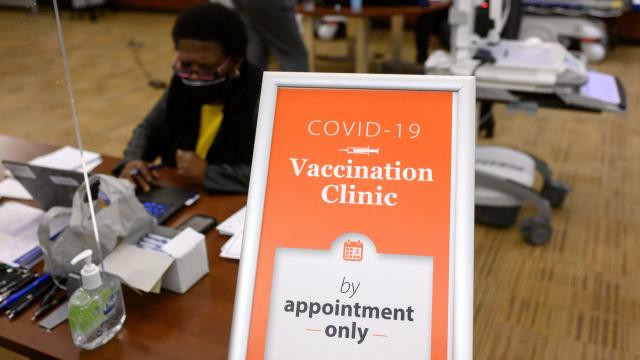On Friday, the Food and Drug Administration authorised the emergency use of a covid-19 vaccine developed by the Massachusetts-based biotech company Moderna. It’s the second such good news in as many weeks, following the FDA’s authorization of Pfizer and BioNTech’s similar mRNA vaccine. Both vaccines look to be highly effective.
The FDA’s decision was made after an advisory committee of outside experts overwhelmingly voted to recommend its use. The crucial data used to evaluate Moderna’s vaccine comes from a randomised, controlled, and double-blinded Phase III trial, involving more than 30,000 volunteers. In the trial, the two-dose vaccine was deemed to be around 94% effective at preventing illness from covid-19, nearly identical to the effectiveness of Pfizer/BioNTech’s version.
Aside from effectiveness, Moderna and Pfizer/BioNTech’s vaccines also share the same basic technology, which uses messenger RNA as a sort of instruction manual to train the immune system. The mRNA enters cells and prods them into producing the spike protein of the virus — the crucial key that allows the virus to infect cells. When these cells express the proteins on their surface, the immune system responds to them as though they were the actual virus, creating antibodies and other immune cells that can “remember” the germ in the future. Both the mRNA and spike proteins produced by vaccination then disintegrate in the body, without causing the sort of havoc seen with a real infection.
There are some important differences between the two vaccines, though. For one, Moderna has overcome the limitation of needing extreme cold temperatures to keep its vaccine viable (genetic material like RNA tends to be fragile). Though Moderna’s vaccine does need to be kept at -4 degrees Fahrenheit for long-term storage, it can be kept refrigerated for up to 30 days at only 36° to 46° degrees Fahrenheit. Pfizer’s vaccine will need to be kept at -94 degrees Fahrenheit, a requirement that’s expected to be very costly or next to impossible for some rural areas of the U.S. and the world to provide.
On the flip side, the side effects of Moderna’s vaccine may come with more of a punch. More than 90% of vaccinated volunteers experienced injection site pain after the first and/or second dose; close to 70% experienced fatigue; and about 60% had headaches or migraines — all slightly higher rates than seen with Pfizer/BioNTech’s vaccine in the trial data. These reactions were more common in younger people than those over age 65.
The overall rate of serious adverse events in the vaccinated group was low (around 1%) and no different than in the control group, but researchers and Moderna agreed that there were four reports of serious adverse events likely linked to the vaccine. There was one report of uncontrollable nausea and vomiting, two reports of facial swelling, and one report of rheumatoid arthritis. With the exception of the arthritis, all had resolved on their own by the time of the trial’s safety analysis. No reports of allergy (which has so far been seen in three people who received the Pfizer/BioNtech vaccine) were documented.
As many experts have noted, these side effects are often a necessary evil, since they’re a sign of the body’s immune response working as intended. But it’s still something to keep in mind when you receive the shots. Scientists and public health agencies will also have to keep tracking the long-term safety of this vaccine after it’s released to the public. That said, as the FDA did in its review of Pfizer/BioNTech’s data, the agency found that there were no “specific safety concerns identified that would preclude issuance of an EUA.”
Moderna and Pfizer/BioNtech’s vaccines are the only ones that will reach the American public this year, yet there are several other candidates that may become approved or authorised for emergency use early next year, if not in the U.S. then elsewhere. Only a limited supply of each vaccine will be available in the U.S. this month, and those doses are expected to be allocated to health care workers and the elderly. Earlier this month, Moderna worked out a deal with the U.S. to provide an additional 100 million doses on top of the original 100 million doses; the U.S. is also reported to be working on securing 100 million extra doses from Pfizer as well.
